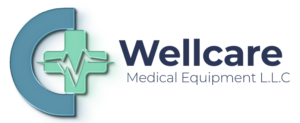Laboratory Medical Equipment supplier in UAE
Laboratory medical equipment holds substantial importance in the UAE's healthcare landscape, playing a pivotal role in advancing medical diagnostics, research, and patient care. Its significance is underscored by its ability to provide accurate and reliable diagnostic results, which are essential for effective disease management and treatment planning. The early detection capabilities facilitated by advanced laboratory tools enable timely intervention, significantly improving patient outcomes and aiding in the prevention of disease progression. Moreover, this equipment supports cutting-edge research and innovation, driving advancements in medical science and contributing to the development of new therapies and diagnostic methods. Efficient laboratory equipment enhances workflow productivity, ensuring quick and precise processing of tests, which is crucial for meeting the demands of healthcare facilities. Additionally, compliance with stringent regulatory standards ensures the quality and safety of diagnostic results, fostering trust in the healthcare system. Overall, laboratory medical equipment is integral to delivering high-quality, personalized healthcare and supporting public health initiatives, making it a cornerstone of the UAE’s healthcare infrastructure.
Laboratory medical equipment plays a crucial role in the healthcare system of the UAE, underscoring its importance in various aspects of medical diagnostics, research, and treatment. Here’s an explanation of its significance:
1. Accurate Diagnostics and Testing
Laboratory medical equipment is essential for accurate and reliable diagnostic testing. High-quality diagnostic tools and instruments, such as blood analyzers, microscopes, and biochemical analyzers, allow healthcare professionals to perform a wide range of tests that are critical for diagnosing diseases, monitoring health conditions, and guiding treatment decisions. The accuracy and reliability of these tests are paramount for effective patient management and ensuring the best possible health outcomes.
2. Early Detection and Prevention
Advanced laboratory equipment enables early detection of diseases and health conditions, which is crucial for preventive care. Early identification of conditions such as cancer, diabetes, and infectious diseases allows for timely intervention, which can prevent the progression of these diseases and improve prognosis. This early detection capability is particularly important for managing chronic conditions and reducing overall healthcare costs by avoiding more complex treatments later.
3. Support for Research and Innovation
Laboratory equipment is integral to medical research and innovation. Researchers use sophisticated tools and technologies to explore new treatments, understand disease mechanisms, and develop advanced medical therapies. Equipment such as centrifuges, spectrometers, and DNA sequencers facilitates cutting-edge research that drives advancements in medical science and contributes to the development of new diagnostic and therapeutic methods.
4. Quality Control and Assurance
In clinical laboratories, the quality of test results is critical. Laboratory medical equipment must adhere to strict quality control standards to ensure that results are accurate and reproducible. Regular calibration, maintenance, and validation of equipment help in maintaining high standards of diagnostic quality, which is essential for patient safety and effective healthcare delivery.
5. Efficient Workflow and Productivity
Modern laboratory equipment enhances the efficiency and productivity of laboratory operations. Automated systems and advanced technologies streamline workflows, reduce manual errors, and accelerate test processing times. This efficiency is vital for managing large volumes of tests, improving turnaround times, and meeting the demands of healthcare facilities.
6. Supporting Public Health Initiatives
Laboratory equipment plays a key role in public health initiatives, including disease surveillance, outbreak management, and epidemiological studies. Accurate testing and analysis help in monitoring public health trends, identifying outbreaks, and implementing appropriate control measures. This capability supports national health strategies and contributes to the overall well-being of the population.
7. Enabling Personalized Medicine
With advancements in laboratory technology, personalized medicine has become increasingly feasible. Genetic testing, molecular diagnostics, and other specialized tests allow for tailored treatment plans based on individual patient profiles. This personalized approach enhances the effectiveness of treatments and minimizes adverse effects, leading to better health outcomes.
8. Compliance with Regulatory Standards
In the UAE, laboratory medical equipment must comply with stringent regulatory standards and guidelines. Ensuring that equipment meets these standards is crucial for maintaining accreditation, ensuring patient safety, and meeting legal requirements. Compliance with regulations also fosters trust in the healthcare system and assures patients of the quality of care they receive.
In summary, laboratory medical equipment is fundamental to the UAE’s healthcare system, driving accurate diagnostics, early detection, and innovative research. It enhances quality control, supports efficient workflows, and contributes to public health and personalized medicine. The importance of this equipment is reflected in its impact on patient care, research advancements, and overall healthcare delivery.




